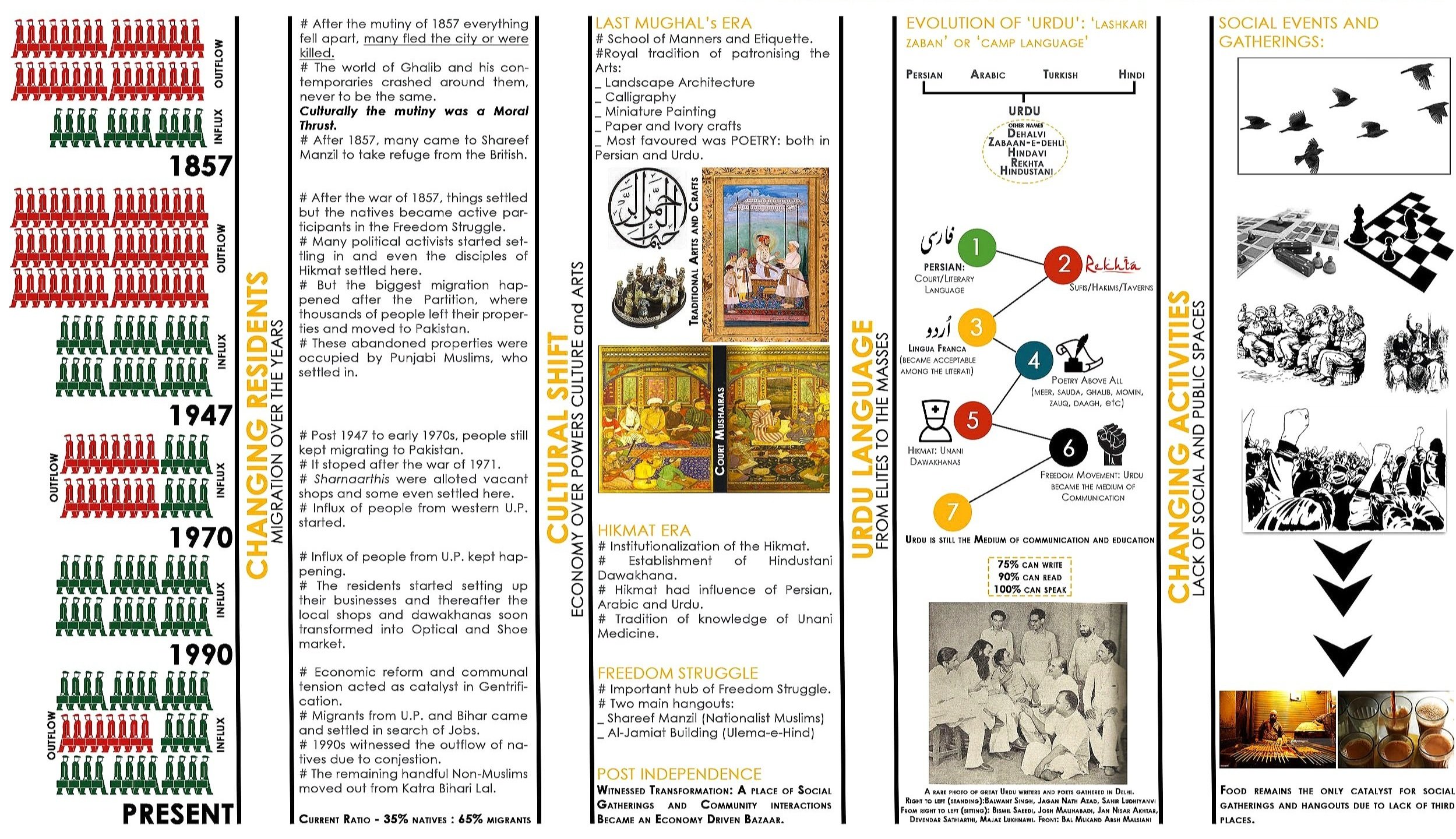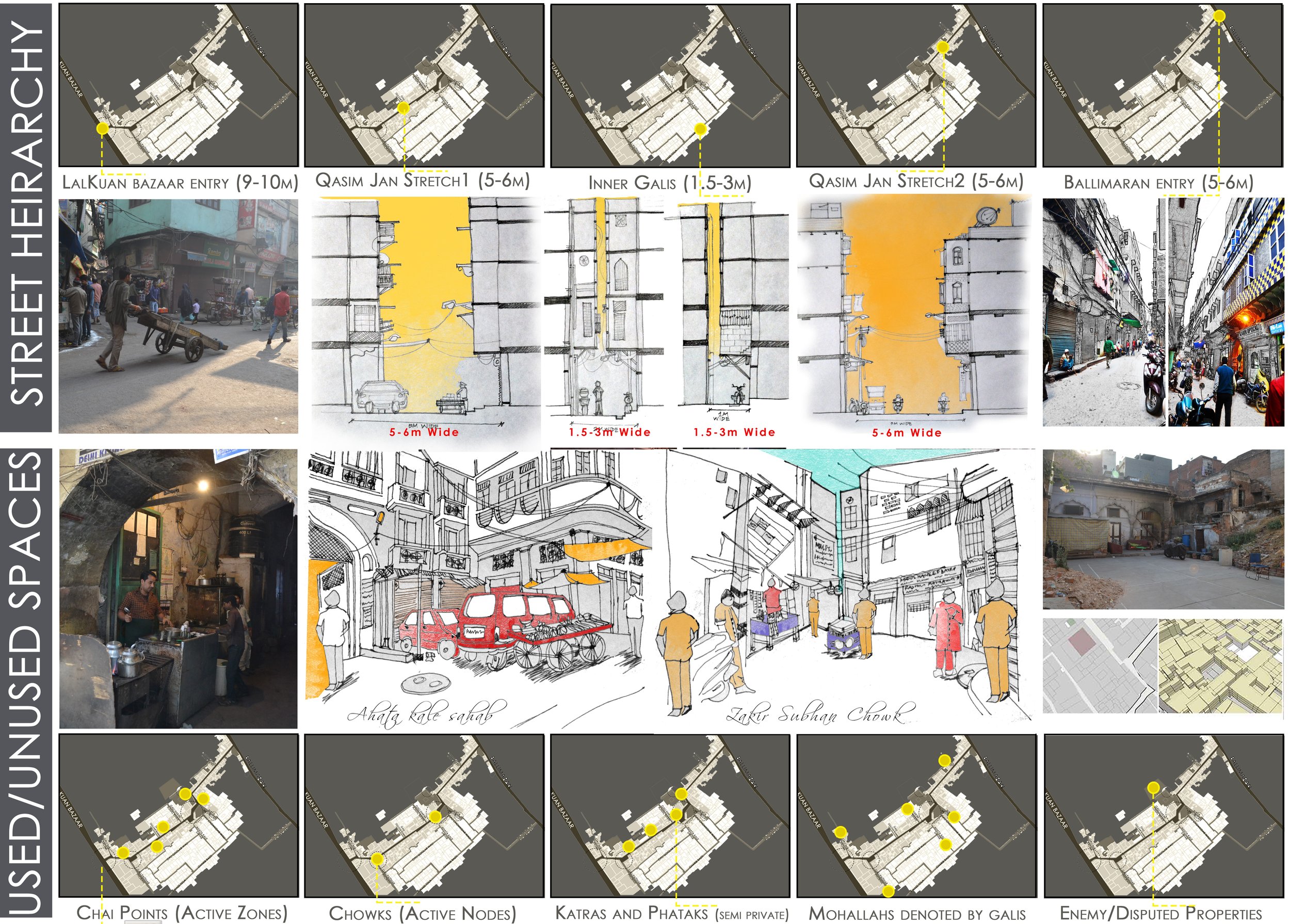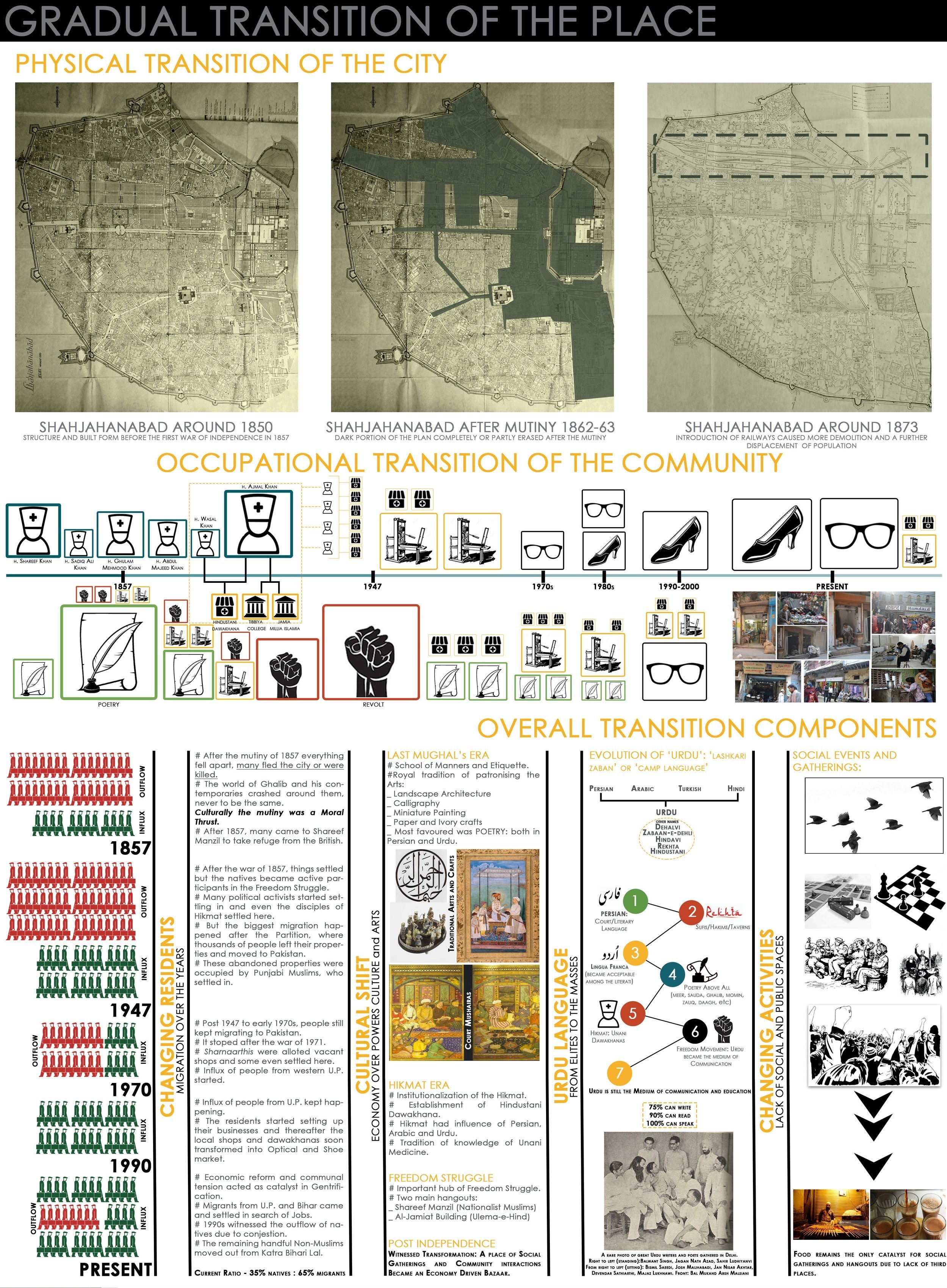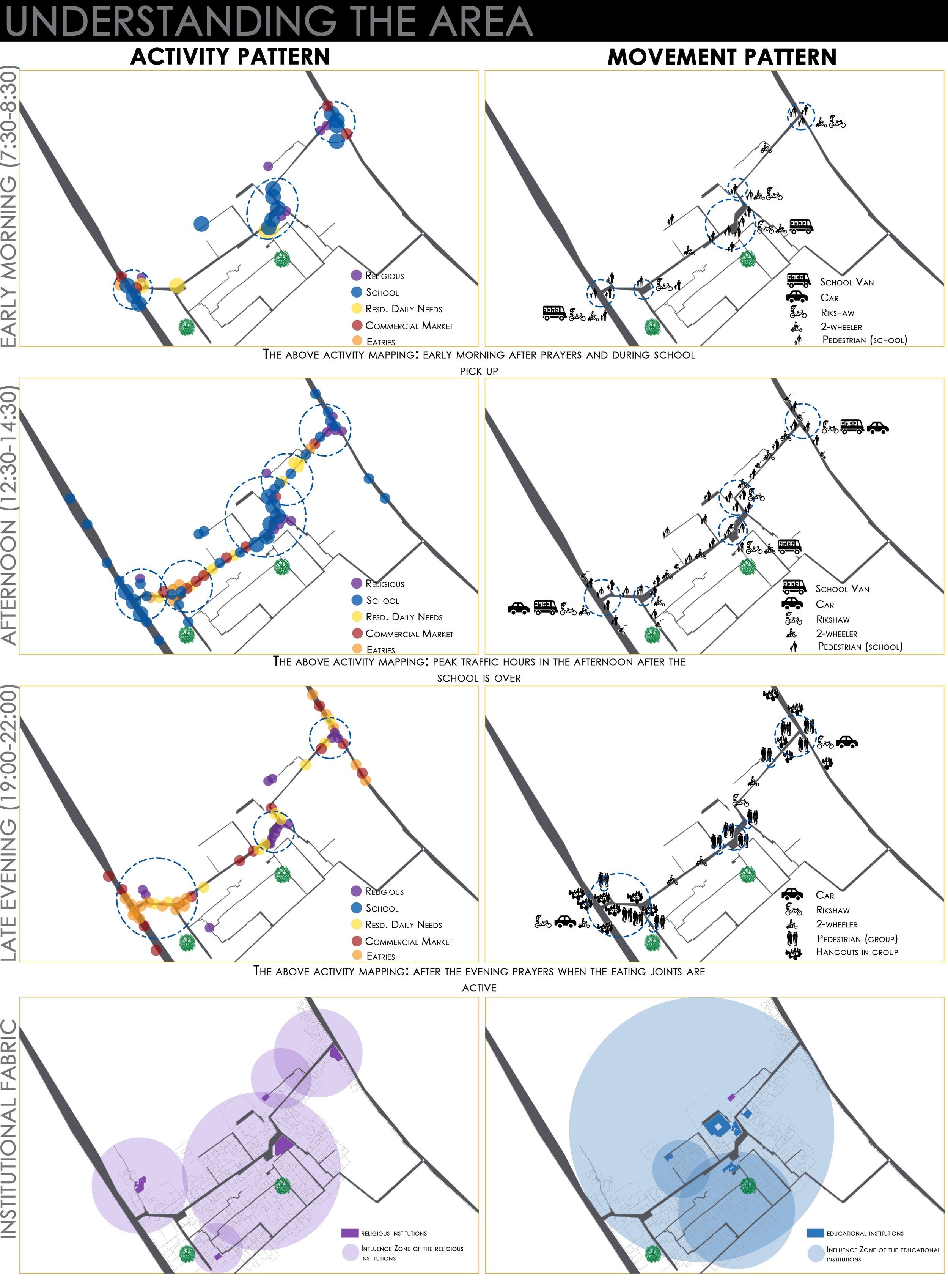Socio-cultural Revitalization of Gali Qasim Jan
—
Using Memory, Identity, and Historicity
URBAN REGENERATION THESIS
The thesis sought to identify a historically significant neighborhood and explore its social and cultural importance. It aimed to regenerate the area and examine the impact of urban transformation, particularly in gentrifying regions like Shahjahanabad, through the lens of
"Memory of the City.”
The research involved engaging with locals to understand their memories and studying the area's present condition, activities, and community dynamics. The aim was to identify and consider both challenges and opportunities for revitalization.
The initial step involved identifying heritage buildings (havelis) in Old City Shahjahanabad with significant historical or cultural associations in collective memory.
A total of 14 such havelis were identified, mapped, and documented for further analysis.
site selection process
Memory and the City: Shahjahanabad
Areas with Associational Significance
Associational Value and Historicity
Sieve out the most appropriate site
Following the identification of various heritage buildings (havelis) in Old City Shahjahanabad, the next step involved selecting one neighborhood with significant cultural and associative value to serve as a model project. The selection criteria were based on several factors: the presence of substantial heritage and historical value, cultural significance, intangible cultural heritage to preserve, accessibility to documentation for further research, associational importance with a renowned historical figure, and its continued relevance in the collective memory, stories, and discussions of the city's inhabitants.
Criteria of Site Selection
The most suitable site that fulfilled all the criteria was Gali Qasim Jan, renowned for its association with the esteemed Urdu poet Ghalib.
Industry
Urban Regeneration
Duration
4 Months
Tools
Architecture: AutoCAD, Revit, SketchUp
Presentation: Office, Adobe Photoshop
1. History
During the Mughal era under Bahadur Shah Zafar's reign, Delhi boasted a refined culture known as Tehzeeb, which celebrated the arts despite limited architectural progress due to financial constraints. Poetry, particularly in Persian and Urdu, flourished as the primary intellectual pursuit, with literary gatherings like mushairas becoming significant social events. Mirza Asadullah Khan Ghalib, a prominent Urdu poet, resided in Gali Qasim Jan, Ballimaran, in a house now known as Ghalib's Haveli, characterized by a structurally introverted design for privacy. Chandni Chowk, beyond its commercial significance, served as a pivotal boulevard leading to the palace, attracting diverse communities for discussions and reflecting Delhi's rich cultural tapestry.












































